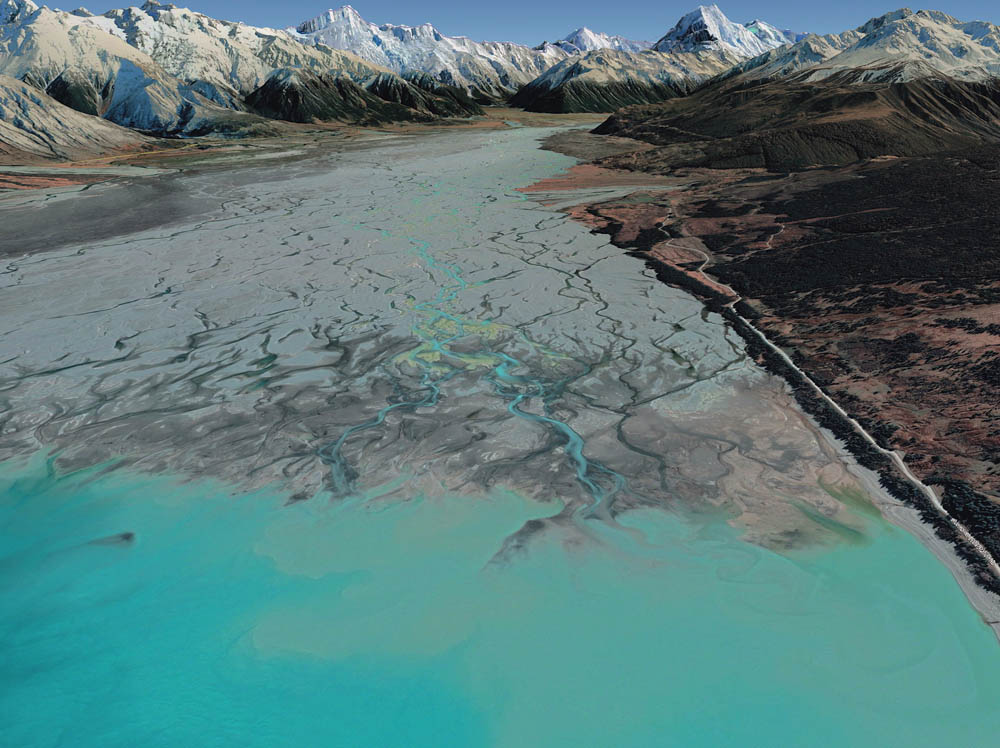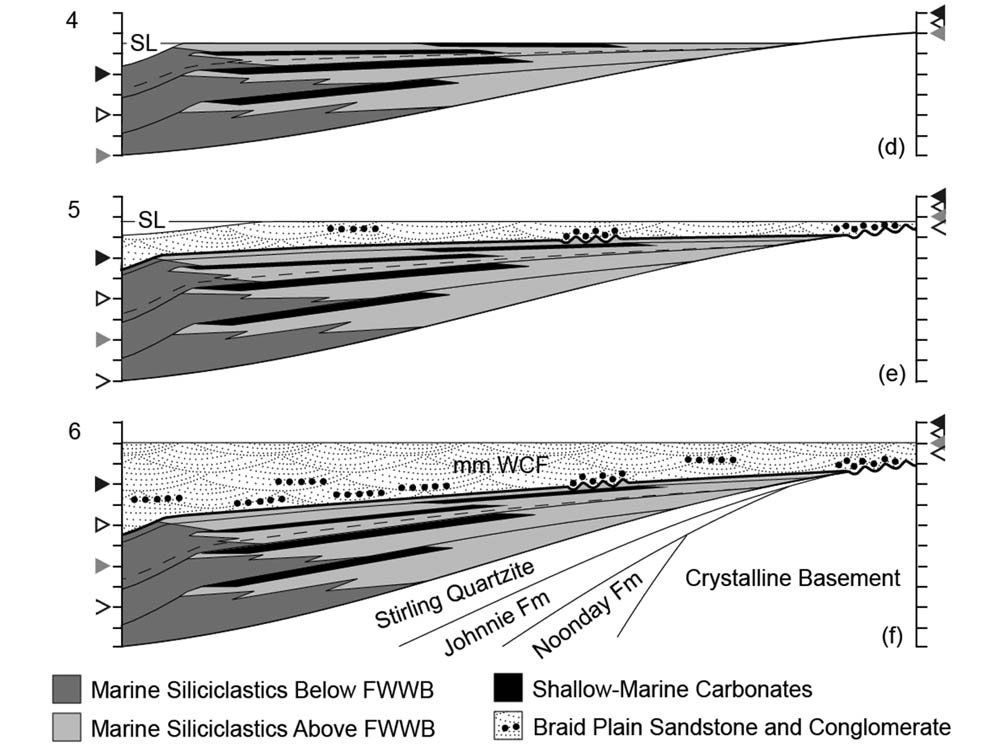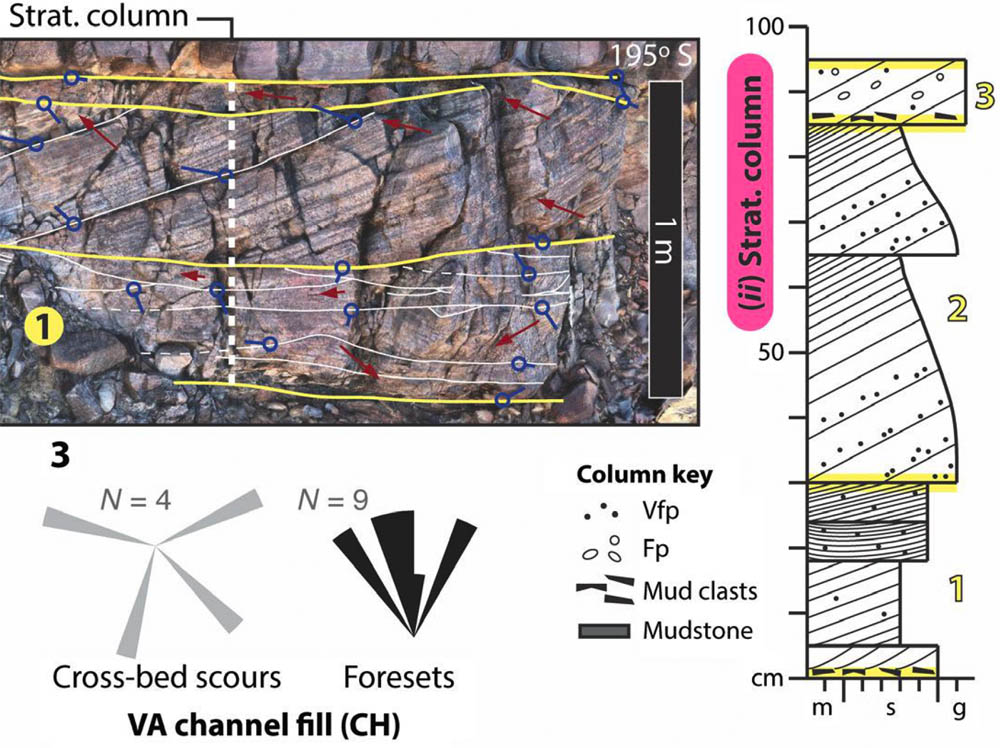
Depositional Systems & Sequence Stratigraphy
My longest standing interest in clastic sedimentology has been facies analysis and sequence stratigraphy. Most of my perspective has been honed by a thirty-year project that began as my senior thesis investigating the sedimentology and sequence stratigraphy of Neoproterozoic and Cambrian rocks in southeastern California. This research has centered around interpreting the depositional environments of different units, placing the stratigraphy in a sequence stratigraphic framework, and linking the stratigraphy to determining the paleotectonic evolution. As the succession spans the Precambrian-Cambrian boundary, we are linking environments to key paleobiological components, such as Ediacaran organisms, trace fossils, and documenting evidence for terrestrial colonization of metazoans.
A key aspect of our research is to develop a detailed understanding of the poorly known braid-delta depositional environment. Braid deltas are comparatively poorly known relative to common deltas, which are attached to single-thread meandering rivers. By contrast, braid deltas form at the distal end of braided rivers where they reach base level. Given the lack of widespread vascular land plants prior to the Devonian, braid deltas would have been the dominant delta type on Earth for three billion years. Our on-going research is focused on documenting processes and products of modern braid deltas from satellite scale, determine physical/textural characteristics in modern systems, and study them in the rock record.
My group is also working on understanding lacustrine and lacustrine-margin depositional environments as part of interpreting the stratigraphic succession in Gale crater, Mars. Lake systems have notoriously complex facies interactions in relation to the balance of water/sediment input and evaporation. In addition, my research is co-leading the group responsible for making a stratigraphic column, and making a geologic map usingx the stratigraphic units.
Five representative publications:
Muhlbauer, J.G., and Fedo, C.M., 2020, Architecture of a fluvial dominated, wave- and tidal-influenced, pre-vegetation braid delta: Cambrian middle member of the Wood Canyon Formation, southern Marble Mountains, California, USA: Journal of Sedimentary Research, v. 90, p. 1011-1036.
https://doi.org/10.2110/jsr.2020.023
Edgar, L.A., Fedo, C.M., Gupta, S., Banham, S., Fraeman, A.A., Grotzinger, J.P., Stack, K.M., Stein, N.T., Bennett, K.A., Rivera-Hernandez, F., Sun, V.Z., Edgett, K.S., Rubin, D.M., House, C., Van Beek, J., 2020, A lacustrine paleoenvironment recorded at Vera Rubin Ridge, Gale Crater: Overview of the sedimentology and stratigraphy observed by the Mars Science Laboratory Curiosity Rover: Journal of Geophysical Research – Planets, v. 125.
https://doi.org/10.1029/2019JE006307
Muhlbauer, J. G., Fedo, C. M., 2020, Architecture of a distal pre-vegetation braidplain: Cambrian middle member of the Wood Canyon Formation, southern Marble Mountains, California, USA: Sedimentology, v. 67, p. 1084-1113.
https://doi.org/10.1111/sed.12677
McGlynn, I.O., Fedo, C.M., McSween, H.Y., 2011, Origin of basaltic soils at Gusev Crater, Mars by aeolian modification of impact-generated sediment: Journal of Geophysical Research – Planets (Special Issue in MER Rovers), v. 116, E00F22
https://doi.org/10.1029/2010JE003712
Fedo, C.M., Myers, J.S., and Appel, P.W.U., 2001, Depositional setting and paleogeographic implications of Earth’s oldest supracrustal rocks, the >3.7 Ga Isua Greenstone Belt, West Greenland: Sedimentary Geology, v. 141-142, p. 61-78.
https://doi.org/10.1016/S0037-0738(01)00068-9




